OmegaCAM science data was processed and quality control checked during the period between January 1, 2012 and July 13, 2012. However, from July 13, 2012 OmegaCAM quality control will follow the QC XXLight paradigm and science processing and evaluation has been discontinued. Verification of the quality control of calibration files is done as usual.
The OmegaCAM pipeline creates four output frames from its science recipe (omega_science): a reduced science image coadding all input frames within the OB (OC_SSCI_<date>_1_1_normal_normal_<filter>.fits), a confidence map of the stacked science image (OC_SCMS_<date>_1_1_normal_normal_<filter>.fits), a fits table catalogue listing the detected sources for the coadded science frame (OC_SCAT_<date>_1_1_normal_normal_<filter>.fits), individual reduced science images (OC_SSDI_<date>_1_1_normal_normal_<filter>.fits), and a bad pixel mask for each individual science image (OC_SSMA_<date>_1_1_normal_normal_<filter>.fits).
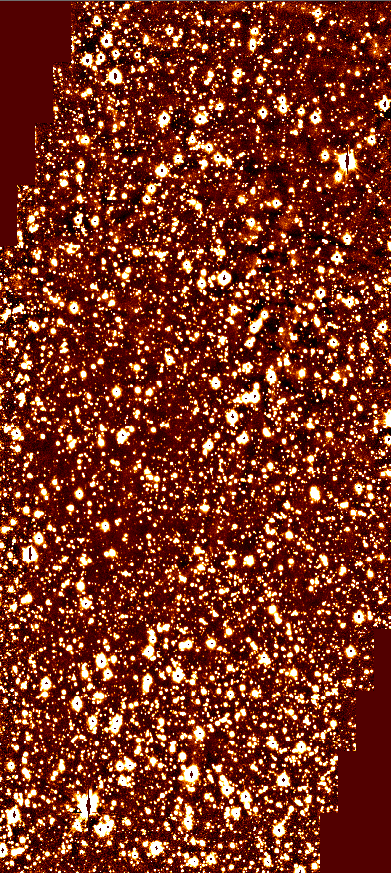 |
The full, coadded OmegaCAM reduced science frame for a single detector (r_SDSS filter). (PRO.CATG = STACK_SCIENCE) |
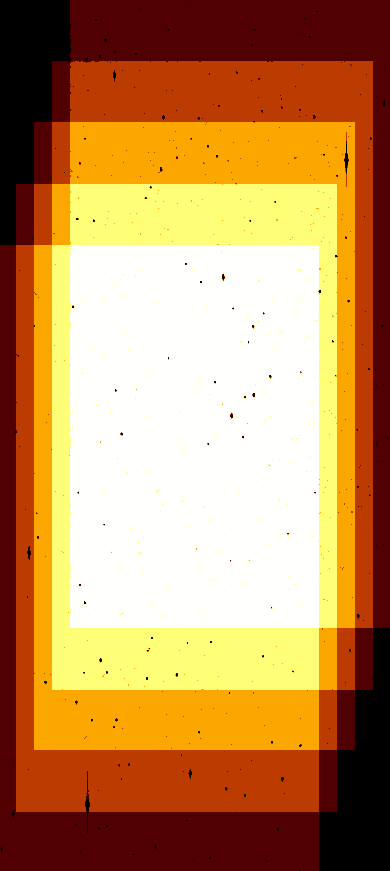 |
The confidence map of the above coadded science frame for a single detector (r_SDSS filter). (PRO.CATG = CONF_MAP_SCIENCE)
|
 |
A single dither, single detector OmegaCAM reduced science frame (r_SDSS filter). (PRO.CATG = SIMPLE_DITHER, SIMPLE_JITTER, SIMPLE_OFFSET, or SIMPLE_STARE) |
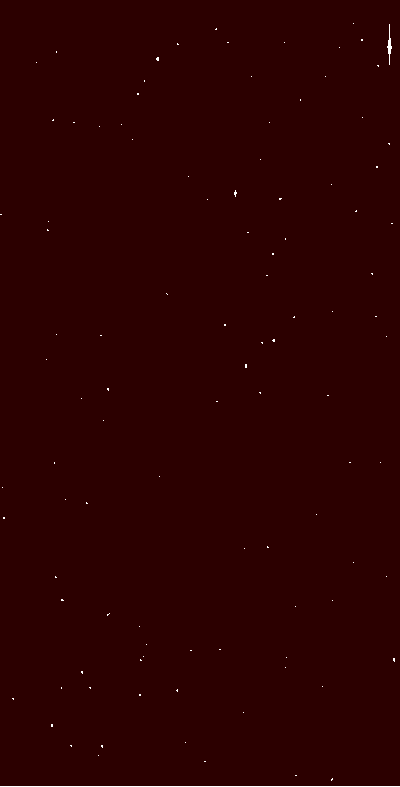 |
A single dither, single detector bad pixel mask for the above reduced science frame (r_SDSS filter). (PRO.CATG = SIMPLE_MASK). A value of 1 indicates a bad pixel; otherwise 0. |
top
SCIENCE parameters trended
|
QC1 Health Check Plots
No health check plots were created for the processed science frames. All quality control was done via scoring of the frame FWHM, stellar ellipticities, source number counts, and image quality.
QC1 parameters (trended for each individual detector)
| Parameter |
Table: Name (QC1 database) |
Description of Procedure |
| number of USNO-A2 stars matched in science field |
omegacam_science: qc.sci.matches |
The number of USNO-A2 standard stars matched in the science frame. The USNO-A2 stars are used to determine an astrometric solution for the frame. |
ratio of USNO-A2 stars matched in science field
|
omegacam_science: qc.sci.ratio.matches |
The ratio of USNO-A2 matches to the total number of detected stars in the field. |
| zeropoint (ADU/sec) |
omegacam_science: qc.sci.zeropoint |
The zeropoint assigned to the science frame from the associated standard star OB (this zeropoint has flux units of ADU/second). |
| zeropoint (e-/sec) |
omegacam_science: qc.sci.zeropoint.electron |
The zeropoint assigned to the science frame from the associated standard star OB (this zeropoint has flux units of electrons/second). |
| science frame FWHM |
omegacam_science: qc.sci.seeing |
The median Sextractor FWHM of detected sources with CLASS_STAR>=0.9 (arcsec). |
| science frame ellipticity |
omegacam_science: qc.sci.ellipticity |
The median SExtractor ellipticity of detected sources with CLASS_STAR>=0.9. |
| average airmass of science frame |
omegacam_science: qc.airmass |
The average airmass measured during the exposure (start + end)/2. |
| average DIMM seeing |
omegacam_science: qc.ambi.seeing |
The average DIMM seeing after correcting it for the central wavelength and airmass of the observation (arcsec). |
| average temperature of the two detector plate probes |
omegacam_science: qc.temp.mosaic.plate |
The average value of the header temperature keyword DET.TLM5 and DET.TLM8, both of which probe the temperature of the mosaic plate (Kelvin). |
QC Reports for the science frames
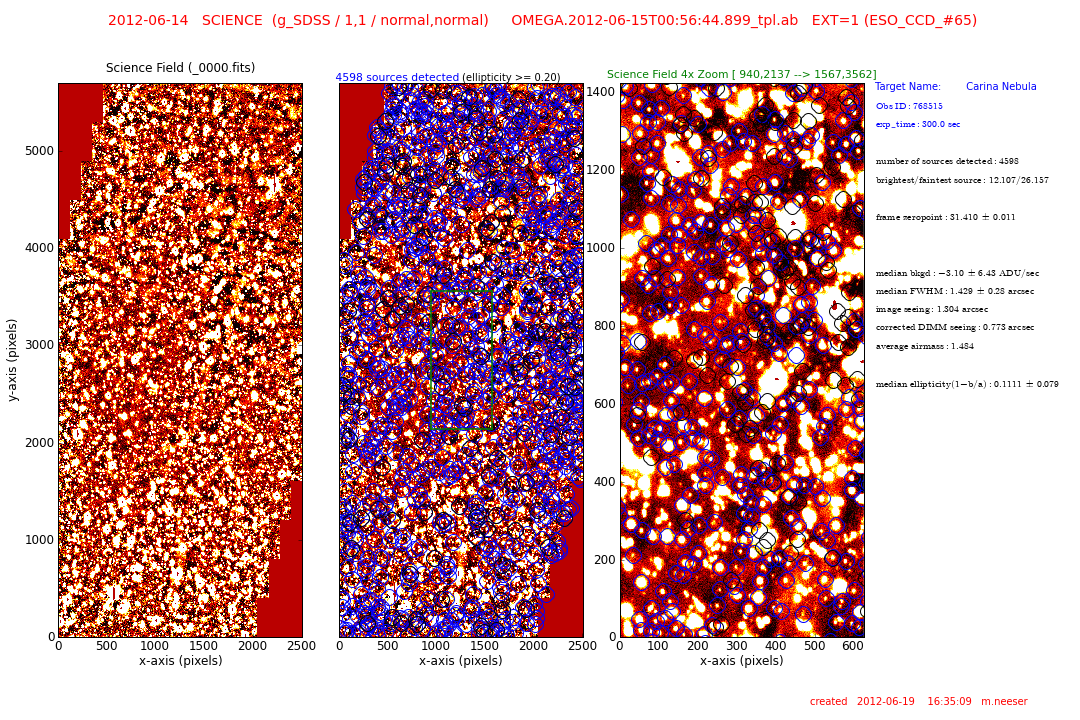
QC Report 1:
left: full-field image of the reduced science field of the extension listed at the top of the image.
center: full-field image of the reduced standard star field with detected USNO-A2 stars marked with blue circles. If the USNO-A2 star has an ellipticity >= 0.20 the marking circle is black.
right: a 4x zoom of the center area of the reduced science field. At the far right of these images, a number of data parameters are listed.
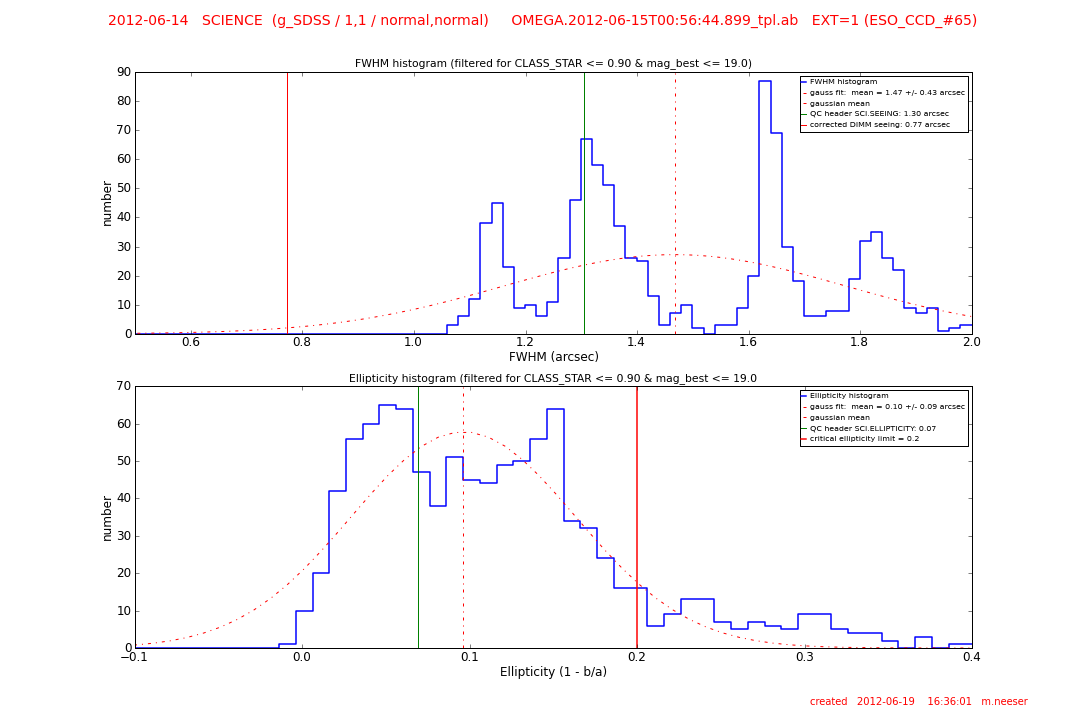
QC Report 2:
top: A histogram of the FWHM measured for all detected sources having CLASS_STAR <= 0.90 and mag_auto <= 19.0.
A Gaussian fit to the FWHM histogram is shown (dotted red line) and its values indicated in the legend. The QC header SCI.SEEING is shown as a vertical green line and the corrected DIMM seeing (corrected to the wavelength of the science observation) and is shown as a vertical red line.
bottom: A histogram of the ellipticity (1 - B/A) measured for all detected sources having CLASS_STAR <= 0.90 and mag_auto <= 19.0.
A Gaussian fit to the ellipticity histogram is shown (dotted red line) and its values indicated in the legend. The QC header SCI.ELLIPTICITY is shown as a vertical green line and the critical ellipticity limit of 0.20 is marked as a red vertical line.
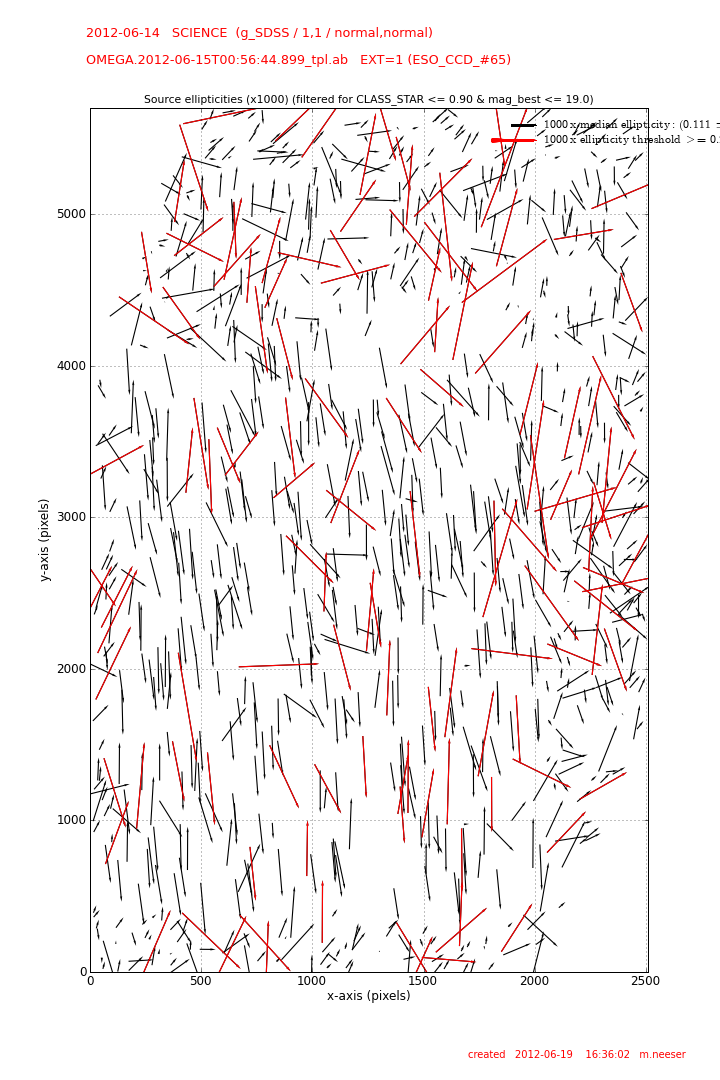
QC Report 3:
The ellipticity (1 - B/A) and position angle of each detected source centered on its position. The length of each line is exaggerated by 1000x and those ellipticities above the critical threshold of 0.2 are shown in red.
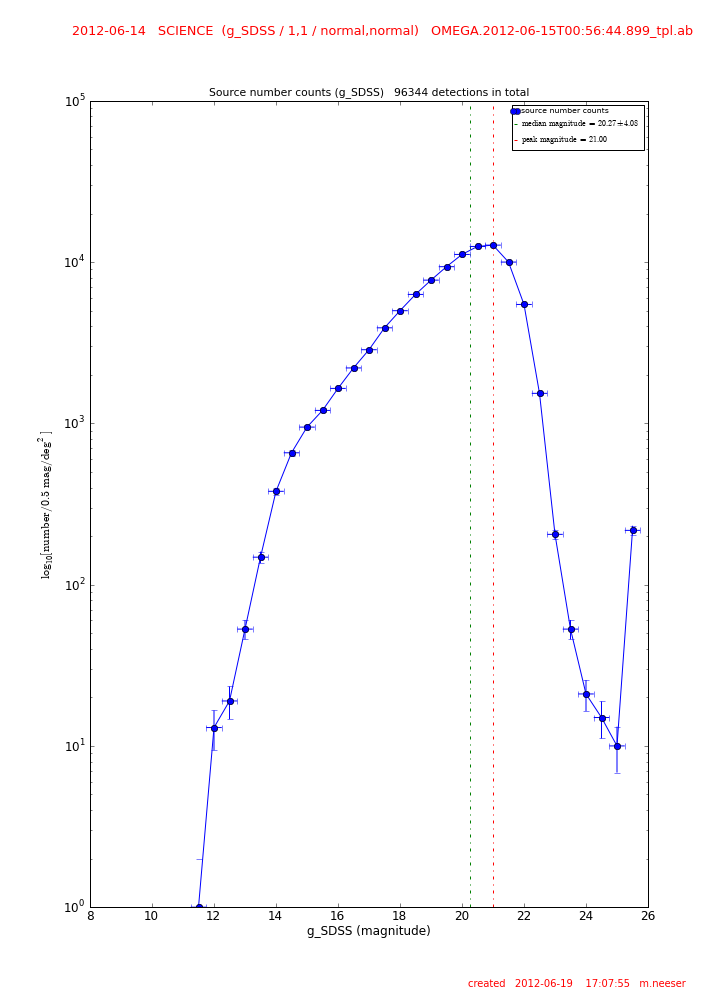
QC Report 4:
The detected source number counts log10[number/0.5 magnitudes/sqr. deg.] vs. magnitude. The median magnitude and peak magnitude is listed in the legend and the total number of detected sources is given at the top of the frame.
Trending and Issues
OmegaCAM science frame processing and quality control is only temporarily supported from January 2012 to mid July 2012. Post July 15, 2012 no science data will be processed and OmegaCAM will be set to QC XXLight standards.
History
The focus of the QC for the OmegaCAM science frames is on image quality. Along those lines qc_sci_seeing (i.e. the image FWM vs. the corrected DIMM seeing) and qc_sci_ellipticity were monitored. Most importantly, the ellipticity measured over each detector is not to exceed 0.20.
Striping is sometimes visible in detector #82 (from about 2012-05-01 to 2012-06-04).
|
![[ ESO ]](/images/eso-logo.gif)
![[ ESO ]](/images/eso-logo.gif)
